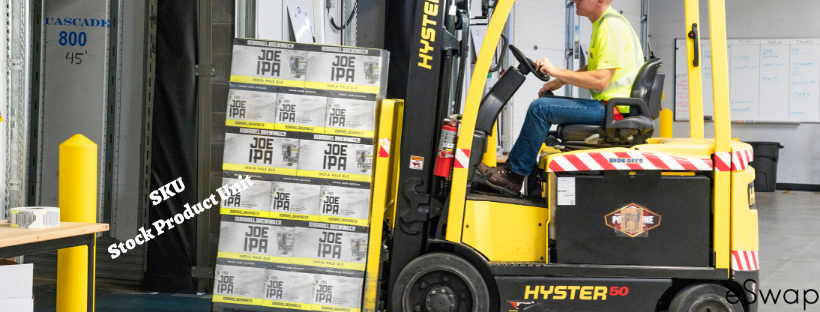Don’t be surprised if I again start to speak about the role of inventory in each company. Being the main asset it is always in the center of attention for every business owner.

Every company keeps inventory in different forms. For retailers, inventory consists of products they buy and sell.
But for manufacturers, the inventory consists of components, raw materials, and finished goods.
For tracking their inventory, companies need to have good SKU management.
If you are new in retail, you will probably ask ” What is SKU?”.
What is SKU?
SKU stands for Stock Keeping Unit. It is one of the most used technical terms in inventory and order management. It refers to product scannable code generally printed on labels and invoices.
SKUs are too important for any business as they are essential parts of monitoring and tracking the company’s inventory. Every business should spend a lot of time and money on inventory tracking and consequently on SKU managing processes.
Accurate SKU management enables you to optimize your inventory, analyze the cost of each product and finally increase your revenue.
Stock Keeping Unit management can be done manually or automatically.
Of course, today every business process tends to become automated, however, if you are going to manage SKU manually, consider to calculate two metrics: SKU ratio and Sales ratio.
To get rid of these boring processes, just automate your SKU management and improve the accuracy of your data by investing in a cloud-based inventory management system with many other features. Due to automated inventory management, you will be able to track and update inventory in real-time.
The common question remains “How to create good SKU?”
First of all, SKU should be human-readable and easily decipherable. They also should be unique for each product in your inventory.
That’s good. But there are several points you should take into consideration:
- Try to create your own SKU codes without using your manufacturer codes. It’s a bad practice to add prefixes or suffixes and create SKU codes. Remember, in case of changing your manufacturer it will become a problem for you.
- Try to create SKU codes to identify the item easier. Never try to use irrelevant information, keep it for tags. Make logically and easily decipherable codes according to the cascade method. That is start with the main set of information about your item, then the next essential subset and go on until you can easily identify that specific item in your warehouses.
- A not less important factor is the right choice of fonts and characters, especially when it refers to similar characters. For example, 0 and O, l(L) and I(i). You should be careful in fonts to minimize any misunderstanding. In such cases using bold, serif fonts will be salvation․ Using symbols in creating your SKUs, will be another great mistake.
CKTSSGN
That is:
CK-Calvin Klein
TS-T-Shirt
S-Small
GN-Green
SKU vs UPC
What is the Universal Product Code?
UPC stands for Universal Product Code by GS1 U4S. It is an external 12-digit code for a specific product in any part of the world.
Are SKU and UPC the same?
Unlike SKUs, UPC cannot be understandable by humans, but only by computerized equipment.
In spite of differences, they both are created to fasten and simplify inventory tracking processes.
To conclude all the information above, we can point out the following advantages of SKU:
- Enable you to decrease the chance of thefts in your huge warehouses
- Allows you to increase the effectiveness of reordering processes and never go out of stock
- Help you to understand the popularity of each product and its variants
- Reduce the carrying costs by determining slow-moving products
Let us know about your experience with SKU management!







